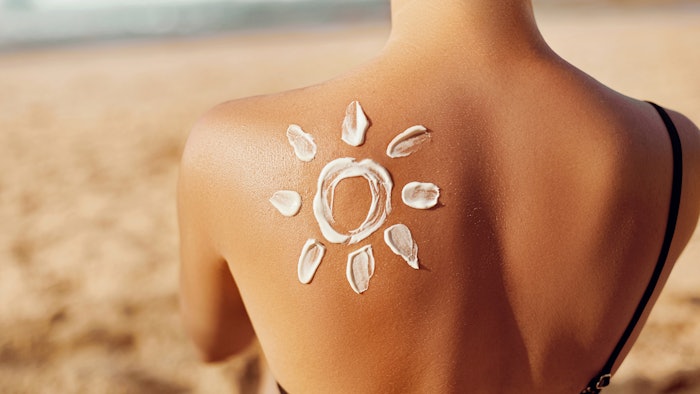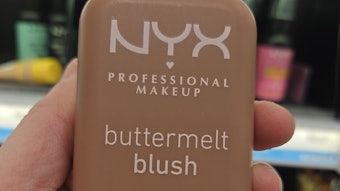
Summertime can be filled with sunshine, beaches, insects and humidity. However, as product developers know, great weather that is synonymous with beach days and warm breezes can also easily damage skin.
Warmer weather often causes the skin to become more oily due to higher temperatures, in turn increasing sebum production. This increase may leave the skin more prone to break outs and folliculitis. When sweat mixes with bacteria and oils on the skin, it also can clog pores and hair follicles.
The American Academy of Dermatology Association (AAD) notes that summertime can affect the skin in various additional ways, such as irritated skin, melasma, heat rash, sun allergies and sunburn. It describes approaches to help reduce some of these skin concerns, such as washing/blotting off sweat, washing sweaty clothing, showering after swimming in the pool or ocean, and choosing fragrance-free skin care.1
The obvious extra sunshine in the summer also makes skin more prone to uneven skin tone and discoloration. The changing weather may further prompt a change in skin texture, color and elasticity, so it is important to adjust skin care products for weather and climate considerations.
One of the top product changes consumers make with the seasons is their moisturizer. Winter often calls for thick, hydrating and occlusive-based moisturizers to assist in maintaining the barrier during frigid temperatures and winds; summertime moisturizers require the opposite. As stated, summer skin often promotes oily skin, which means an emollient-rich moisturizer that is perfect for winter will not suffice.
Instead of a buttery cream, summertime calls for a lightweight moisturizer. Here, a gel- cream type moisturizer is ideal, especially for those who suffer from extra oil and greasy skin.
Such moisturizers are different in their increased water content and lower saturated oil content, with an increased focus in water-based actives such as humectants to rehydrate the skin, as opposed to protecting it with emollients and occlusives. Following is an overview of the key ingredients to formulate gel-cream summer moisturizers.
Humectants
Humectants are generally hygroscopic substances that add water content to the top layer of skin by facilitating hydration. Humectants are compounds that attract and bind to water, and are a part of the Natural Moisturizing Factor (NMF). These materials can not only deliver hydration, but also can help to enhance the skin penetration of active ingredients with addition of alpha-hydroxy-acids (AHAs).
Ingredients reported to help increase hydration and the NMF inside corneocytes include: honey, propylene glycol, sorbitol and hyaluronic acid. Ensuring that the corneocytes are repaired and the NMF are filled can ensure the skin is looking plump and supple, achieving the first step toward glowing skin.2
Gel-like Thickeners
Synthetic polymers such as acrylic acids and carbomers are best used in the summer. These molecules create crystal clear gels and provide a water-like feel. Gums such as guar, xanthan and carrageenan are also options to create a texture that has added slip and a slightly sticky residue in formulations.
Cellulose is, likewise, an option to add slip to the formulation; some examples would be hydroxyethyl cellulose and hydroxypropyl cellulose. These ingredients will contribute to the gel of the gel-cream system. It is important to note that gum and cellulose are best when wetted with glycerin or propanediol before adding to water, to minimize clumping during batching/compounding.
Emollients
Emollients soften and smooth the skin by filling voids between corneocytes; this in turn helps protect the skin from external factors. Additionally, it will help hydrate the skin if light weight emollients are selected. It is important to ensure that the concentration of emollients remains low to ensure the gel-like texture is maintained.
Some examples of emollients include: mineral oils, plant oils, vegetable oils and silicones. It is vital that emollients for gel-cream moisturizers are lightweight and easily absorbed into the skin; it would be wise to avoid emollients that have occlusive-like characteristics.
Emulsifier
The emulsifier is the most important ingredient when it comes to making sure the water and oil phases peacefully coexist in the system. There are vast options for emulsifiers; some examples are cetearyl olivate, sorbitan olivate, cetyl alcohol, glyceryl stearate and cetearyl alcohol, to name a few.
Testing emulsifiers is important in various oil phases as they can affect the finish of the final formulation. The final formula should be tested in an incubator to ensure it is stable and that the emulsifier is doing its job. If any separation is found in the incubator, changing the emulsifier, or adjusting the emulsifier ratios may be helpful.3
Preservatives
Finally, preservatives are vital ingredients in any cosmetic formulation, to help prevent the growth of yeast, mold and bacteria. Some examples that can be used in gel-cream emulsions are caprylhydroxamic acid, 1,2-hexanediol, phenoxyethanol and ethylhexylglycerin. As with any ingredient, it is imperative to check formulation guidelines to determine whether to incorporate them in a hot or cooled medium.
Conclusion
Summer can bring joy and sunshine, but it also affects how skin feels and looks, and what it needs. Summertime often is synonymous with humidity that can drive the skin to create more sebum and oil while at the same time, still feeling dehydrated. This unique feeling can be addressed using a gel-cream type formula to allow for an increase in hydration, combined with the low oil concentration for just the right amount of moisturization without overcompensation.
References
1. https://www.aad.org/public/everyday-care/skin-care-secrets/routine/prevent-summer-skin-problems
2. https://www.cosmeticsandtoiletries.com/formulas-products/formulating-basics/article/22043960/formulating-on-trend-glow-serum
3. https://www.cosmeticsandtoiletries.com/formulas-products/formulating-basics/article/22018426/formulating-on-trend-kbeauty-soft-focus-face-primer










